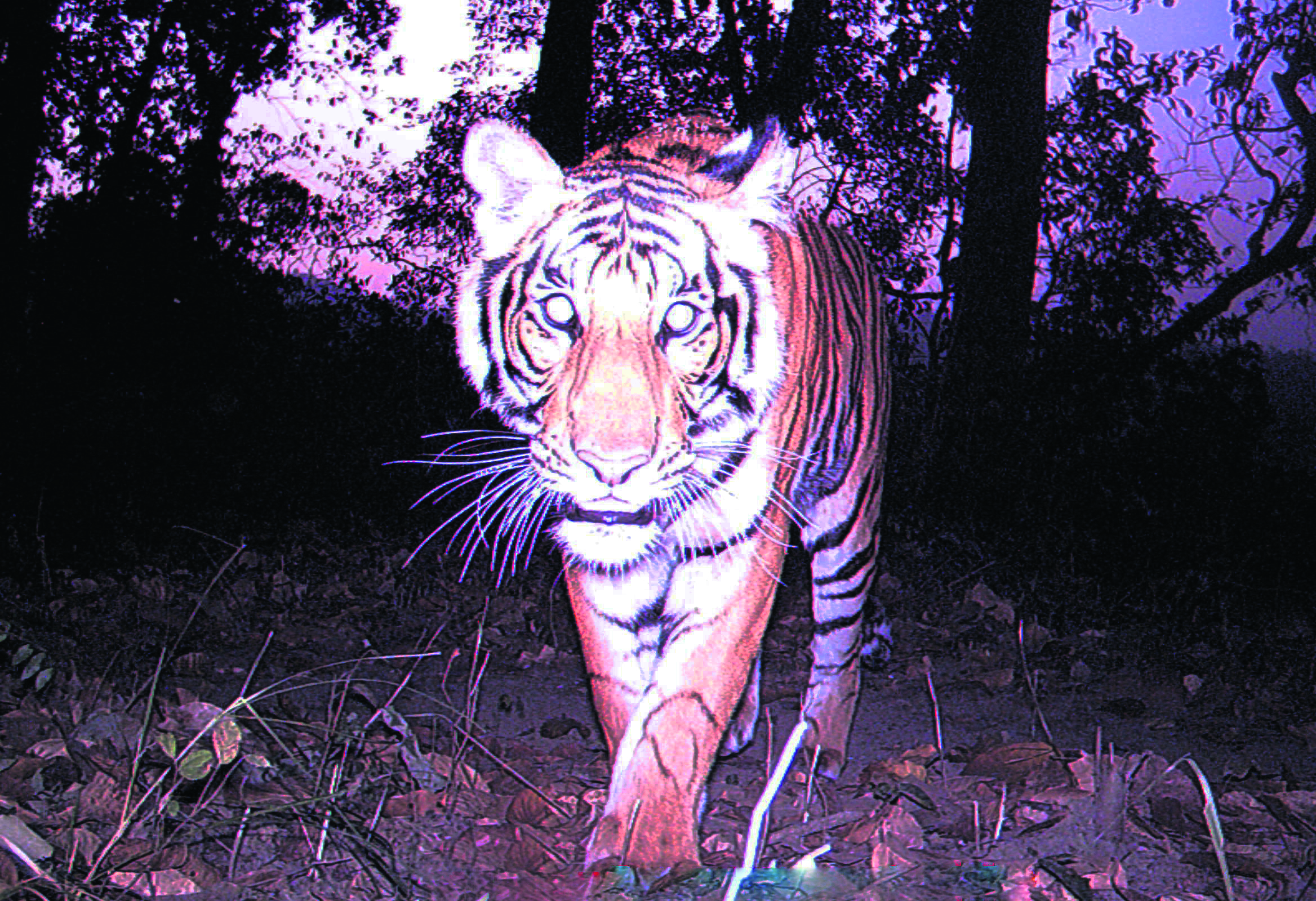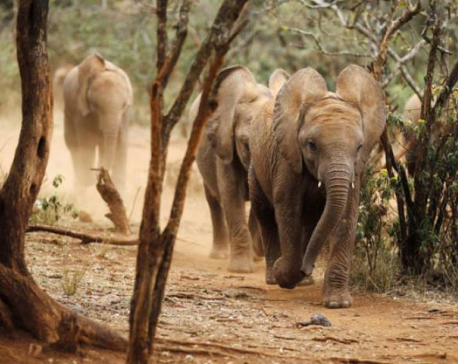
OR

In the Tarai Arc Landscape of Nepal, wildlife biologists, researchers and field staff from the Government of Nepal, World Wildlife Fund (WWF) and National Trust for Nature Conservation (NTNC) are using cameras equipped with infrared triggers, called camera traps, to obtain critical data about wildlife and their habitats. Camera traps, hidden in some of the most remote and inaccessible locations inside the jungle, are activated by infrared sensor when body heat or movement of an animal is detected. Even though the word ‘camera trap’ may sound alarming, the name is derived from the manner in which it captures wildlife – on film, without causing any harm to the wildlife itself. Through these day and night camera images collected from the past tiger surveys in the Tarai Arc Landscape, we provide you a glimpse into the previously unseen world of some of the most endangered species on earth.
Today, July 29, is International Tiger Day. This day is marked to give worldwide attention to the conservation of tigers.
Understanding corridor functionality
A wildlife corridor provides the habitat linkage between two or more larger patches of wildlife habitat, critical for the movement of wildlife ensuring viable wildlife population and sustaining ecological processes.
These camera trap images are of the same tiger spotted in Bardia National Park and Katarniaghat Wildlife Sanctuary, showing its movement between the two protected areas through the Khata corridor.
Population survey
Camera traps are a great tool to estimate the number of tigers in the wild. Wildlife biologists and researchers place the camera traps on animal trails to document their presence, abundance and population changes.
Discovering new species
The camera traps have been extremely useful in providing evidence for the existence of elusive mammals like the clouded leopard, honey badger, leopard cat and others, which otherwise would never be known. In 2014, the ruddy mongoose, previously found only in India and Sri Lanka, was discovered for the first time in Banke National Park of Nepal, through camera trap photos.
Tracking the poachers and illegal loggers
Camera traps, also known as the remote eyes in the forest, are being used all over the world, not only to study wildlife but also to increase anti-poaching efforts. Evidence of human trespassers can better inform park managers of possible illegal activity in the protected areas, and the Nepal army and park staff can be notified to take action.
You May Like This

Humanity has wiped out 60% of animals since 1970, major report finds
The huge loss is a tragedy in itself but also threatens the survival of civilisation, say the world’s leading scientists Read More...

Celebrating Girlhood
Though girls have been an integral part of human development, their role in decision making and nation development is still... Read More...

Tiger population count starts in national parks and wildlife reserves
KATHMANDU, Dec 9: The Department of National Parks and Wildlife Conservation (DNPWC) has started a census of tiger population in... Read More...




Just In
- Govt receives 1,658 proposals for startup loans; Minimum of 50 points required for eligibility
- Unified Socialist leader Sodari appointed Sudurpaschim CM
- One Nepali dies in UAE flood
- Madhesh Province CM Yadav expands cabinet
- 12-hour OPD service at Damauli Hospital from Thursday
- Lawmaker Dr Sharma provides Rs 2 million to children's hospital
- BFIs' lending to private sector increases by only 4.3 percent to Rs 5.087 trillion in first eight months of current FY
- NEPSE nosedives 19.56 points; daily turnover falls to Rs 2.09 billion















Leave A Comment